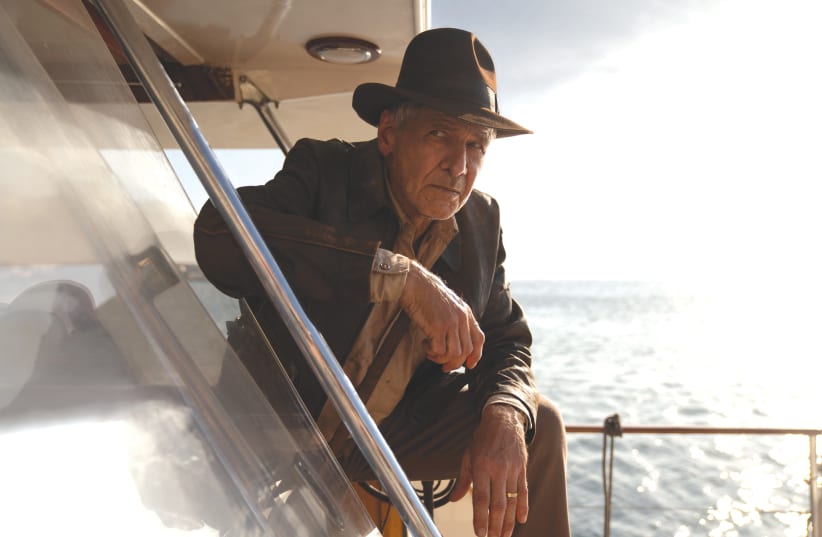The “dial” referred to in Indiana Jones and The Dial of Destiny is the Antikythera Mechanism, the world’s first computer, created around 200 BCE and possibly used to track celestial bodies.
The real Antikythera Mechanism was found in a shipwreck in 1901, corroded after millennia on the sea floor, and is now displayed in the National Archaeological Museum in Athens.
A new shiny version of the mechanism was created for the movie. Harrison Ford, now 80, was also digitally de-aged for a prologue to the Indiana Jones series, set in 1944.
Unlike its predecessors, the fifth and latest installment in the Indiana Jones franchise is based on science – not aliens or the supernatural. British science fiction author Arthur C. Clarke once noted, however, that: “Any sufficiently advanced technology is indistinguishable from magic.”
As the movie opens, Indy is working undercover as one of the “Monuments Men” tasked with recovering artifacts looted by the Nazis. After a chase sequence that goes on far too long, we fast forward to 1969. Indy’s now a grumpy old man, pounding on a neighbor’s door to get him to turn down the music.
Just as he’s retiring from Hunter College, Indy is visited by his neglected goddaughter, played by Phoebe Waller-Bridge (Fleabag). She is, of course, searching for the Antikythera Mechanism. Also in search of the gadget is a not-so-former Nazi (Mads Mikkelsen) who works for NASA and just helped put the first men on the moon. Having conquered space, he has his sights on time.
Cannes Film Festival premiere did not receive the expected response
The film’s Cannes Film Festival premiere received a tepid response. A rare cheer went up at the appearance of John Rhys-Davies as Sallah, who was rescued by Indy from Egypt during the Suez Crisis in 1956.
Writers James Mangold (who also directed), Jez Butterworth, John-Henry Butterworth and David Koepp mostly failed to capture the wit, warmth and humor of the first and third Indy movies – directed by Steven Spielberg and written by Lawrence Kasdan and Jeffrey Boam.
A kid sidekick (Ethann Isidore) functions primarily as a clunky plot device. His relationship with the leads is severely underdeveloped. The character is a shoddy copy of “Short Round” in Indiana Jones and the Temple of Doom, played by Oscar-winner Ke Huy Quan – whom many hoped would at least get a cameo in the new film.
The dialogue is ill-served by a sound mix that makes much of it unintelligible. A questionable script decision was turning an attempted “honor killing” by a jilted Arab fiancé into a joke.
This will reportedly be the last Indiana Jones movie to star Harrison Ford, but not the last in the series.
Asked at the Cannes press conference, “Why is now the time to let Indy go?” Ford gestured at his own time-worn although still-handsome face.
“Isn’t it obvious?” he said.
Could the Indiana Jones movies continue with a digitally “de-aged” Ford – perhaps even after he is no longer with us? The response of Kathleen Kennedy, president of Lucasfilm, was “No.”
Nevertheless, some argue that the “magic” of artificial intelligence could make human actors (as well as writers, directors, and other film professionals) obsolete and unemployed. AI is a major issue on which Hollywood studios and streamers refused to negotiate with the screenwriter’s union (the WGA), leading to the current strike.
SAG-AFTRA, the union that represents actors, has also asked its members to authorize a strike if its own contract negotiations fail.
Can movies still be magic if they’re generated by computers rather than crafted by humans?
Only time will tell.
Indiana Jones and The Dial of Destiny will be released worldwide on June 30.
